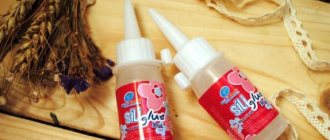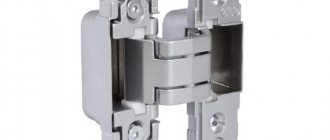Colorful question
The number of shades of door handles created by designers is not inferior to the palette generated by nature. Cold chrome, matte nickel, imitation of noble gold, silver or bronze impress with their laconic shine. Tightly colored models are the trend of the day, where white and black are eternal antagonists.
The decor on the handle is also strikingly varied. Carving, blackening, curls, rhinestones and other decorations determine the aesthetics of the door leaf. The generous variety of accessories sometimes makes it difficult to make the right choice. Purchasing a doorknob for a specific home with its unique color and style can be a challenge.
Summary – Nickel vs Chromium
We mostly use the terms "brushed nickel" and "chrome" when talking about hardware and fittings in our homes. The key difference between brushed nickel and chrome is that brushed nickel produces a matte finish while chrome produces a shiny finish. Additionally, brushed nickel is best for traditional homes, while chrome is best for modern homes and farmhouses.
Link:
1. “Five reasons to choose brushed nickel for your kitchen.” Native Trails, December 29, 2022, available here.
How to choose the color of a door handle
When buying a door handle, you should follow the principle of harmony: cold shades are combined with cold ones, and warm shades are combined with warm ones. Mixing opposites looks unattractive and creates visual discomfort. In order not to suffer a color fiasco, it is necessary to take into account the color scheme of the door leaf, walls, floor, baseboards, as well as the design of the home.
Door leaf
Tree rings and curls on the surface of the canvas are a unique natural decoration, the relief of which is emphasized by delicate tonal transitions. To avoid overload in this context, preference should be given to ascetic matte fittings. Handles in chrome color are appropriate if the wood grain is weakly expressed.
The beauty of walnut is emphasized by polished brass; silver is the best solution for noble bog oak. Maple and cherry woods with pink or red reflections go well with gold and bronze, including aged ones. Nickel handles are suitable for pearl gray alder. Enameled models allow you to play on contrasts; a white canvas in combination with a black door handle sets the dynamics of the space. A universal option for all other opaque colors is chrome.
Walls
The color scheme of vertical surfaces determines not only the temperament of the home, but also the shade of the door handle. The latter should be 2-3 tones lighter or darker than the color of the walls. The light palette looks harmonious with matte or antique bronze, as well as French gold.
Nickel and silver balance out the dark colors.
Floor
The colors of the flooring and door together form a harmonious ensemble. As with walls, when choosing a handle, you need to be guided by the richness of the shades. The fittings should be a little lighter or darker. Light doors and light floors are organically combined with polished and matte brass, dark ones are an excellent background for all shades of gold and nickel.
Skirting
The classic solution is a plinth matched to match the trim and door. The interior door handle, which correlates with the shade of the canvas, by default matches the color of the baseboards. If the starting point when choosing a baseboard was the shade of the floor, then it should also be the main thing when buying door fittings. In any case, the color of the baseboard is a secondary factor.
Interior
In an apartment where several generations live at the same time, the furnishings are subordinated to personal convenience, and not to a specific style. Handles should be neutral in color. Matte silver or soft gold would be appropriate. In other cases, you should rely on the design of the premises.
A little about door handles and their quality and why externally identical handles cost differently.
A little about door handles and their quality and why externally identical handles cost differently.
Very often, seeing pens that look identical in appearance, even in the same store, people are surprised that they cost differently. The most common explanation from the seller is that one is heavy and the other is light, one is powdered aluminum and the other is cast brass, or one is Chinese and the other is Italian (or also Chinese, but branded). In fact, this is such a simplified explanation that, due to its simplicity, it does not correspond to reality.
Perhaps it’s worth starting with weight.
The main materials for door handles are:
ZAM alloy (Zinc, Aluminum, Copper. English name - ZAMAK, zinc-based alloy, which usually includes 95% zinc and 5% aluminum, copper and other components)
Aluminum - various alloys and composites based on aluminum, silicon, etc. – we will call it for short – aluminum.
Brass – An alloy of zinc (50%) and copper (50%) or other proportions and components depending on the purpose, but for handles it is not particularly important.
So, how much does the cost of the material affect the price of the pen:
TsAM alloy, at the time of writing, costs approximately $3 per kilogram and 3 door handles can be made from a kilogram, which means the price of the material in one handle is $1
Aluminum – costs $2 and almost 8 handles can be cast from 1 kilogram of aluminum. The price of metal in one pen is 25 cents.
Brass costs $4.5 and one kilogram produces 2.5 handles, which means the price of brass for one handle is $1.8. (brass is here just to understand the situation, we will consider in detail TsAM and Aluminum, as the most popular)
This means that the difference between a heavy handle and a light one in production is much less than on the price tag. Heavy handles made of TsAM alloy cost $1, and light ones cost $0.25, the difference is only 75 cents, and on the price tag the difference is at least $5, but usually $10-15 - where does it come from? It's all about the coverage...
Coatings of door handles made from TsAM:
The fact is that the TsAM alloy consists of zinc, and zinc is a very active metal, convenient for casting, pressing and machining, but ugly in appearance, and coatings are poorly applied to it. If you open any catalog of pens, you will see how the manufacturer boasts about the number of layers of coating, here we will look at them:
1. “The first layer is a layer of copper, which provides reliable adhesion to the remaining layers.” - This is a very thin layer of copper cyanide.
The fact is that this is the only way to cover a TsAM handle with anything. Other coatings do not stick.
The process of coating a pen with copper cyanide is extremely expensive, complex and harmful, therefore, the galvanizer’s task is to apply as thin a layer of such copper as possible, and the essence of the process is to soak the pen for a few seconds in a bath of electrolyte. Then they will work with the handle as if it were made of copper, but if there are even tiny places on the handle that are not covered with copper, the entire coating will peel off during use within 1-2 years indoors, and one winter outdoors.
Therefore, high-quality pens have a thicker first layer of copper - accordingly, they are more expensive, because copper plating from cyanide electrolytes is very expensive, and the thicker the layer, the more expensive the product, and the thinner the layer, the more uncovered areas.
2. “The second layer of copper – evens out unevenness” - after a thin layer of copper cyanide is applied to the handle, the manufacturer builds up a thicker layer of copper from a cheap electrolyte. After casting, the handle is all porous, uneven and ugly. To level it, the handle can be machined, but this is expensive, or you can simply cover it with a thick layer of copper; the copper levels the handle after casting.
3. “A layer of nickel – evens out even the smallest irregularities” – the leveling copper turns out matte, and in order not to polish it by hand, the matte ground is simply covered with nickel; nickel makes the surface smooth and shiny.
4. “A layer of chrome makes the surface hard and durable” - yes, that’s right, after this the handle is ready for the final decorative coating. Only here it is worth saying that some manufacturers use cheaper decorative nickel instead of chrome. It is at this step that the so-called COPPER-NICKEL-CHROME coating, or the cheaper analogue COPPER-NICKEL-NICKEL DECORATIVE, ends. The quality of this coating determines how long the handle will not peel, scratch or peel.
To find out what quality the coating has, the pen is placed in an incubator with salt fog, and the time is measured after how many hours the coating on the pen begins to deteriorate. After this, the coating can be assigned a class. As a rule, cheap pens can spend 48 hours in salt fog, mid-range pens - 72 hours, and premium pens - 200-250 hours. The difference in the cost of coating for a 48 hour pen versus a 72 hour pen is approximately $2-3. A pen with a premium coating is 200 hours more expensive than an economy one (48 hours) by $5-7.
5. “Tinting layer” - a decorative layer that determines the appearance of the handle; it can be copper, bronze, gold, nickel, chrome, etc. Can be applied galvanically or vacuum sprayed. May be matte or shiny. The cost of the handle and its resistance to abrasion depend on its thickness.
6. “One or two layers of varnish” - needed so that the pen out of the box would shine and has almost no effect on the durability of the coating.
7. “Laser logo” – everything is clear here
Coverings for door handles made of Aluminum:
The easiest and cheapest way to reliably coat aluminum is to anodize it (aluminum itself takes on a beautiful appearance in an electrolyte under the influence of current), but the colors of anodized aluminum differ from traditional galvanic coatings, and it cannot be passed off as a brass handle or a ZAM handle. Therefore, aluminum is coated in galvanic baths.
The situation with aluminum is simpler than with DsAM. Aluminum can be coated in the same way as ZAM, but without the cyanide electrolyte. Therefore, coatings are cheaper, and the manufacturer himself, when producing aluminum handles, tries to make them as cheap as possible and saves on coating. Therefore, at best, aluminum handles will spend 48 hours in salt fog, but usually even less.
If we talk about aluminum handles, their service life is short, usually no more than 3-5 years, therefore the coating on them is weak and, as a rule, they are sold in catalogs, where people do not have the opportunity to hold a high-quality one in their hands and compare it with a light one with a pen.
In addition to the material from which the handle is made, it is important to evaluate the quality of the coating. Therefore, if you see 2 outwardly identical handles, both are heavy, but one costs $15 and the other $25, this does not mean that you are being deceived, perhaps one is covered better.
Doors and handles: win-win color duets
To be sure to avoid mistakes when buying door handles, you should take design tips into account. Experts have compiled a concise color matching guide. Handles with a wood pattern are suitable for handles in French gold, matte bronze and polished brass.
Shades of brown, ranging from beige to coffee, look aesthetically pleasing with warm-spectrum fittings.
Gray and black colors love a cool shine.
Painted doors have a special eclecticism. If the canvas is one-color, then the handles should be bought to match or vice versa - bright, contrasting. The rich palette looks attractive with handles in black, white, bronze and silver.
Designer door models with patina and imitation abrasions are combined with PVD gold and matte nickel.
What is Chrome?
Chrome is a metal that is used primarily in the automotive industry, as well as in the production of fittings and hardware. This material is known for its resistance to rust and corrosion. It also has a relatively low price. However, the main disadvantage of chromium metal is the need to regularly clean its surface. This is because the surface of chrome plated metal can pick up water stains and fingerprints.
Figure 02: Chrome faucet
Chrome usually gives a modern or industrial look and is shiny, sometimes showing bluish tones. It can also complement cool colors. This type of metal is suitable for rooms with a cool color scheme, modern or industrial farmhouses, white bathrooms, and when we are remodeling on a budget.
Stylistics
Every detail is important in creating an authentic interior. Provence and shabby chic are an extravaganza of warm shades against the background of opaque floor surfaces, furniture and door panels. White door handles fully correspond to the chosen concept.
The industrial loft, born on the outskirts of abandoned workshops and factories, requires the primacy of metal. Heavy canvases are equipped with massive dark handles: antique silver and antique bronze. Any manifestations of black are also appropriate.
The canons of the classics are not subject to time. Brass and bronze handles on the rosette will come in handy, just like a hundred years ago. Neoclassical is less conservative and allows you to choose between nickel, brass and bronze colors.
Art Deco is a manifestation of luxury in every detail. Brass and gold door handles with all kinds of decor will emphasize the aesthetics of the space.
Scandinavian style and japadi have a similar philosophy - nothing extra in the name of light. Door handles are selected to the point of mimicry with the surrounding environment, with the exception of chrome fittings, which can act as full-fledged room decor.
Minimalism is the new religion of small apartments for big money. The door handles are smooth white brushed metal, with nickel and 925 silver being the best candidates.
Italian style is synonymous with luxury and beauty, combining the principles of strict antiquity and carefree country. The aesthetics of the interior are determined by solid wood furniture, expensive textiles and natural finishing materials. At the same time, in an exclusive setting there is no pretentiousness. The choice of door handles is not limited to strict limits; the main condition is the shades of expensive metals: antique bronze, French gold and patinated silver. The shine is restrained, as if muffled by the salty sea wind and hot sun.











